John Hurrell – 16 June, 2017
There is also interest in inconsistency or saturation of colour, the way that in a stroke the hue becomes anaemic, losing over distance its chromatic power so that a continuous line becomes watery. Then there are the lines that result from wet strokes being applied on wet backgrounds; the supporting colour underneath creating a streaky marbling effect within the robot-drawn linear vector. These lines are normally more rigid and less frenetic than the wobblier hand-drawn flourishes.
The notion of partnership or team collaboration is the central concept in this show, a suite of nearly a dozen Simon Ingram paintings where human spontaneity is paired up with robotic preplanning (ie. programmed mark-making responses) - in order to bring interesting nuances to brusherly paint application and sticky, subtly agitated, grounds. Figuring out the chronological sequence of events is part of the viewer’s fun, deciding what has gone over, under, across or into the most salient image details; who (or what) made it, and which end of each painted stroke is the beginning.
When analysing the images one can consider which marks are (directly) human-made and quickly executed, and which are more slowly constructed by electronically programmed blocks of Lego holding brushes that daub and smear. Plus what has been obliterated - or made over-complicated - over time from the back-and-forth (robot-human) processes, or two robotic or human bursts in a row, so that traces of all that activity are now only partially seen.
There is also interest in inconsistency or saturation of colour, the way that in a stroke the hue becomes anaemic, losing over distance its chromatic power so that a continuous line becomes watery. Then there are the lines that result from wet strokes being applied on wet backgrounds; the supporting colour underneath creating a streaky marbling effect within the robot-drawn linear vector. These lines are normally more rigid and less frenetic than the wobblier hand-drawn flourishes.
Ingram initially composed these linear images on his Android phone (titled by where he was at the time), and blown up onto much larger canvases they become enigmatic diagrams with simple geometric shapes. Inside them are repeated patterns of short diagonal bars that hover in spread-out formation. Machine-drawn grids of lines are wrapped around bundles of squiggly hand-drawn marks, inserting freehand scribbles into diagonal patterns. We ask ourselves: are some of the short marks placed by the computer between the longer ones, or is it the other way round? Which set came first? Sometimes it is obvious; other times it isn’t. And after that ‘exchange’, then what?
Of course in the end, it is really Ingram A playing a tennis-like game with Ingram B, seeing the pre-planned robot doesn’t genuinely think in an off-the-cuff, impulsive or explorative sense. Still, we are forced to analyse mark quality: location, duration, tone, hue, background smudges and pigment consistency. Looking for processual clues. Enjoying Ingram‘s playful, mock-schizoid, cyber-expressionism, but about effect, not affect. Its construction via a conceptual elasticity of crisscrossing procedures.
John Hurrell
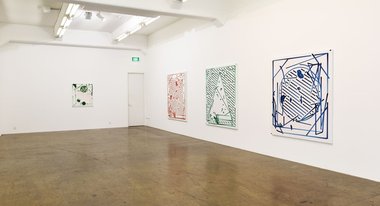
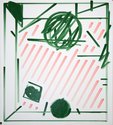
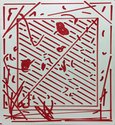
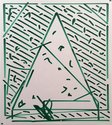
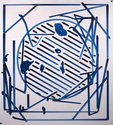
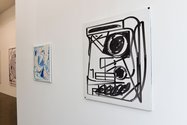
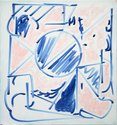
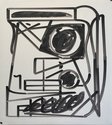
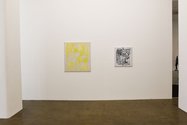
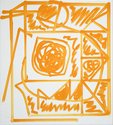
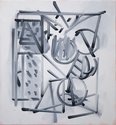
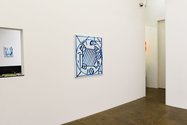

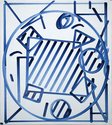
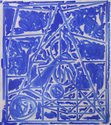
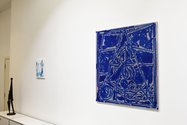
 Two Rooms presents a program of residencies and projects
Two Rooms presents a program of residencies and projects Advertising in this column
Advertising in this column



This Discussion has 0 comments.
Comment
Participate
Register to Participate.
Sign in
Sign in to an existing account.